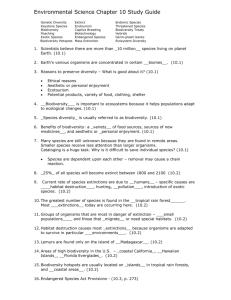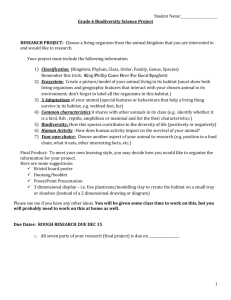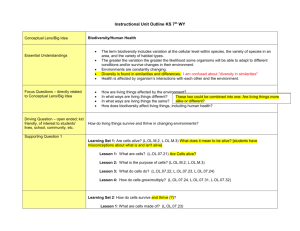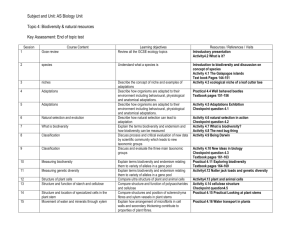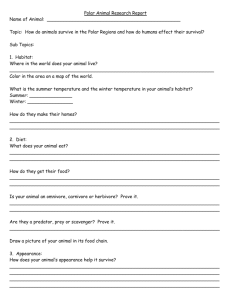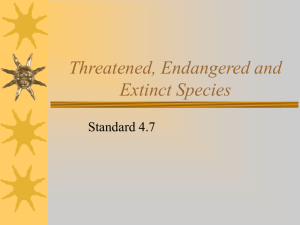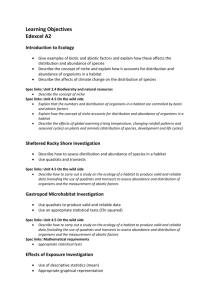assignment 8
advertisement
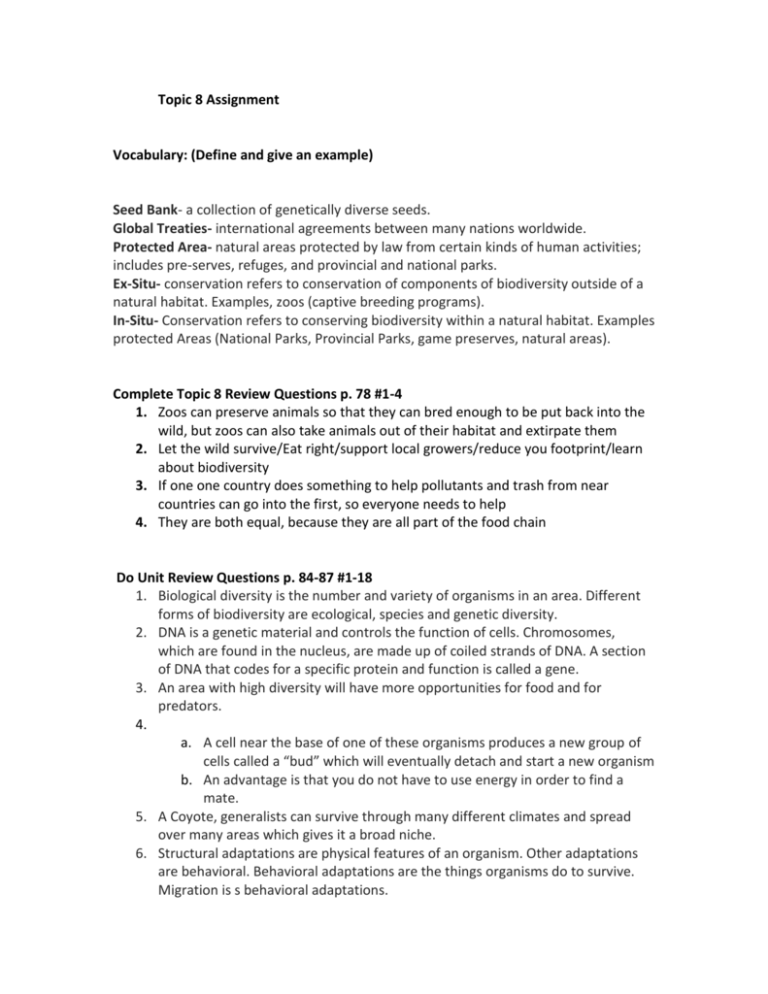
Topic 8 Assignment Vocabulary: (Define and give an example) Seed Bank- a collection of genetically diverse seeds. Global Treaties- international agreements between many nations worldwide. Protected Area- natural areas protected by law from certain kinds of human activities; includes pre-serves, refuges, and provincial and national parks. Ex-Situ- conservation refers to conservation of components of biodiversity outside of a natural habitat. Examples, zoos (captive breeding programs). In-Situ- Conservation refers to conserving biodiversity within a natural habitat. Examples protected Areas (National Parks, Provincial Parks, game preserves, natural areas). Complete Topic 8 Review Questions p. 78 #1-4 1. Zoos can preserve animals so that they can bred enough to be put back into the wild, but zoos can also take animals out of their habitat and extirpate them 2. Let the wild survive/Eat right/support local growers/reduce you footprint/learn about biodiversity 3. If one one country does something to help pollutants and trash from near countries can go into the first, so everyone needs to help 4. They are both equal, because they are all part of the food chain Do Unit Review Questions p. 84-87 #1-18 1. Biological diversity is the number and variety of organisms in an area. Different forms of biodiversity are ecological, species and genetic diversity. 2. DNA is a genetic material and controls the function of cells. Chromosomes, which are found in the nucleus, are made up of coiled strands of DNA. A section of DNA that codes for a specific protein and function is called a gene. 3. An area with high diversity will have more opportunities for food and for predators. 4. a. A cell near the base of one of these organisms produces a new group of cells called a “bud” which will eventually detach and start a new organism b. An advantage is that you do not have to use energy in order to find a mate. 5. A Coyote, generalists can survive through many different climates and spread over many areas which gives it a broad niche. 6. Structural adaptations are physical features of an organism. Other adaptations are behavioral. Behavioral adaptations are the things organisms do to survive. Migration is s behavioral adaptations. 7. a. Vegetative Reproduction the growing tips of roots and stems contain areas of rapidly reproducing cells called meristems. Budding is common in sea sponges, hydra where a cell near the base of one of these organisms produces a new group of cells called a “bud” which will eventually detach it self and become independent. 8. An example of an uncommon dominant trait is an extra thumb 9. 10. Mushrooms need numerous basidia on each gill to produce a new mushroom 11. height, hair color, and skin colour, show continuous variation. 12. a. Populations evolve over long periods of time through natural selection. Survival of the fittest. He looked at the birds on different islands. The same species had different beaks. Because of what they ate. b. All organisms’ produce more offspring than can possibly survive. There is incredible variation within each species. Some of the variations increase the chances of an organism surviving to reproduce. Over time, variations passed on through offspring lead to changes in the genetic characteristics of a species. 13. Diversity in the Tropics of plants and animals (nearly a half of all species) is caused by the ideal environmental conditions (constant heat and humidity). 14. A narrow niche is dangerous because if one member of the neishe died, all of them could die 15. Let the wild survive/Eat right/support local growers/reduce you footprint/learn about biodiversity 16. The more farmland made from rainforests, it adds pollution and takes away from the rainforest’s ecosystems 17. Humans have effected biodiversity in many ways, one way is by urbanizing everywhere all across the world. We have also hunted certain animals into nonexistence. We have created zoos, and habitats for many animals. That helped them and also hindered them. Pollution also affected biodiversity. 18. a. b. When a pollen grain lands on the stigma, a pollen tube is formed. A sperm nucleus then travels down the tube to fertilize one egg c. It acts as a conduit to transfer sperm cells


